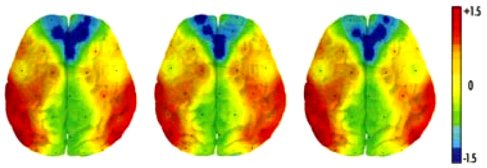Ancient Architectural Acoustic Resonance Patterns and Regional Brain Activity
Ancient Architectural Acoustic Resonance Patterns and Regional Brain Activity
Ian A. Cook, Sarah K. Pajot, Andrew F. Leuchter
Abstract
Previous archeoacoustic investigations of prehistoric, megalithic structures have identified acoustic resonances at frequencies of 95–120 Hz, particularly near 110–12 Hz, all representing pitches in the human vocal range. These chambers may have served as centers for social or spiritual events, and the resonances of the chamber cavities might have been intended to support human ritual chanting. We evaluated the possibility that tones at these frequencies might specifically affect regional brain activity. In a pilot project, 30 healthy adults listened to tones at 90, 100, 110, 120, and 130 Hz while brain activity was monitored with electroencephalography (EEG). Activity in the left temporal region was found to be significantly lower at 110 Hz than at other frequencies. Additionally, the pattern of asymmetric activity over the prefrontal cortex shifted from one of higher activity on the left at most frequencies to right-sided dominance at 110 Hz. These findings are compatible with relative deactivation of language centers and a shift in prefrontal activity that may be related to emotional processing. These intriguing pilot findings suggest that the acoustic properties of ancient structures may influence human brain function, and suggest that a wider study of these interactions should be undertaken.
Keywords: Acoustic resonance; prefrontal cortex; left temporal region; quantitative electroencephalography; cordance measure; 110 Hz.



Leave a Reply
You must be logged in to post a comment.